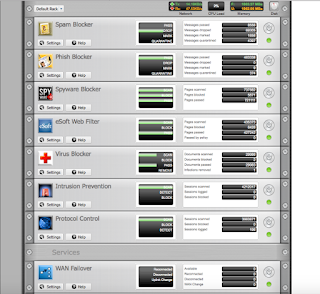Filtering "on the line"
You may have heard this term from your Internet Service Provider, but what does this mean?
In simple terms, some piece of equipment is scanning all your traffic, and doing it's best to filter out known virus, spyware, malware, spam, and all those other bad things we don't need in our lives.
That sounds great!
It is great, it is an amazing technology. Sadly when used by a service provider, the controls are so loose, and the detections are so rare, due to trying to please all the people all the time.
Just do it yourself.
By using a filtering gateway, it can be configured to block all those bad things with much tighter control. Not only that, specific sites can be blocked, sites pertaining to certain topics can be blocked. Access can be limited only to business hours, control between networks and offices, and so much more. Detailed logs of every single site visited on your network, including by who, when, and for how long.
It can even be set to block ads and pop ups before they even reach your computer.
So how is this done?
It is as simple as installing a filtering gateway device between your Cable or DSL Modem, and your main router or switch. That way, every byte that comes out of your network will have to pass through the filter before it reaches out to the internet and every byte will have to pass through the gateway to come back into your network.
A easy to use interface allows configuration of filtering and logging settings.
As an added bonus, a state of the art firewall will keep your network safe from outside attackers, as well as log any type of attempt.
Truly one of the best additions you can make to your business network.
Contact us today to learn more.








